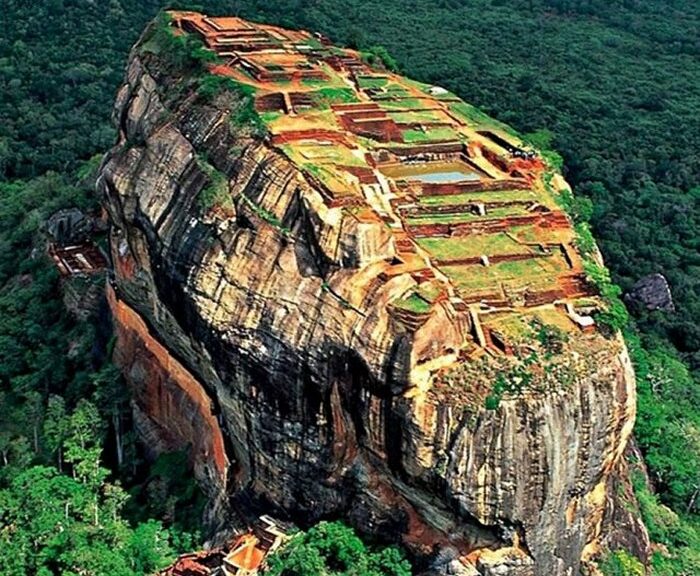Ancient City found atop huge Rock in Srilanka
Sigiriya (The Lion Mountain) is often considered to be the eighth wonders of the world and an ancient stone fortress used by a king of Sri Lanka as a site to build his palace and hide from attacks by his Enemy brother.

Located in Sri Lanka’s central Matale district, the fortress is surrounded by the remains of extensive reservoirs and gardens on all sides.
The most significant feature of this geologic masterpiece is the Lion staircase leading to a palace garden on the top of the rock.


The Lion staircase is a complex structure, a walkway with tiles that rises from the open mouth of the beast that takes its name from and is made of brick and timber. The bricks surround ancient limestone steps.
Named a world heritage site by UNESCO, this rock is full of archeological importance. The other primary feature that draws thousands of tourists every year is the surviving frescoes and other paintings.
The few paintings that survive are the earliest examples of a Sri Lanka school of classical realism, which was fully formed by the 5th century when the paintings at Sigiriya were produced. There are also remains of paintings in some of the caves that are nestled at the foot of the giant rock.
According to ancient texts, the entire rock fortress was built by King Kashyapa and, after his death, was used as a Buddhist monastery until the 14th century.

Who Rediscovered Sigiriya?
The gardens and palace at Sigiriya were abandoned but later assumed by a Buddhist monastery which would occupy the land until the 14th century.
There are no records of the activity at Sigiriya between the 14th and 16th centuries, but by the 17th century, it was used as an outpost for the Kingdom of Kandy independent monarchy.
Western civilization re-discovered Sigiriya in 1831 when British army Major Jonathan Forbes of the 78th Highlanders discovered the bush-covered summit of Sigiriya on a horseback trip across the island.
In the 1890s archaeologist, H.C.P. Bell spent some time at Sigiriya, overseeing a small dig and research operation.
It would be another twenty years until the natural rock formation would return to the public eye; British explorer John Still’s visit to Sigiriya in 1907 sparked international discussion and renewed interest in the Sri Lanka treasure.
Full-scale archaeological work would not begin until 1982 when government-funded Cultural Triangle Project focused its attention on the ancient city.
It was during this time historians learned of Lion’s presence at the gate to Sigiriya, its head having collapsed long ago.







